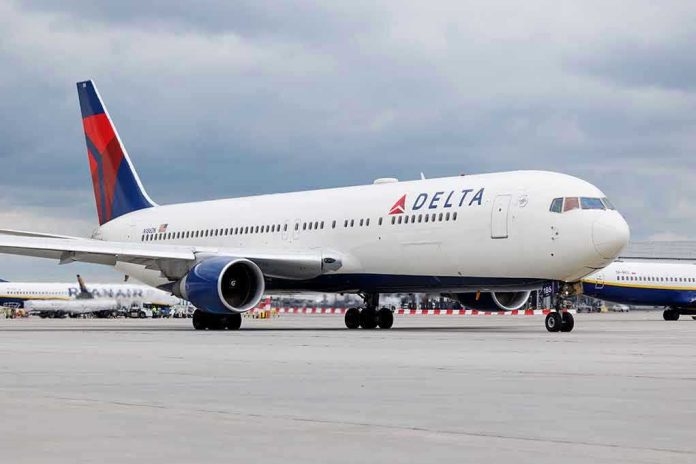
A shocking NTSB report reveals that passengers on a Delta flight were violently hurled into the aircraft ceiling for 2.5 terrifying minutes, exposing dangerous gaps in aviation safety protocols that every American traveler needs to understand.
Story Snapshot
- Delta passengers thrown into ceiling during 2.5 minutes of severe turbulence over Wyoming
- 18 people hospitalized including crew members with serious injuries after emergency Minneapolis landing
- NTSB report reveals turbulence caught pilots off-guard despite storm avoidance efforts
- Incident highlights growing turbulence dangers amid climate change and inadequate safety enforcement
When Technology Fails Patriots in the Sky
Delta Flight 56 departed Salt Lake City bound for Amsterdam on July 30, 2025, carrying passengers who trusted modern aviation technology to keep them safe. Despite pilots actively altering course to avoid thunderstorms over Wyoming, the aircraft suddenly encountered severe turbulence that lasted an agonizing 2.5 minutes. Unbelted passengers and crew were thrown with such force into the cabin ceiling that aviation safety consultant Jeff Guzzetti described it as “like a muscle man grabbing you by the shoulders and with all of his strength trying to pull you up.”
Regulatory Failures Leave Families Vulnerable
The NTSB’s September 9, 2025 preliminary report exposed critical weaknesses in current safety protocols. Twenty-four people required paramedic evaluation, with 18 hospitalized including two seriously injured crew members. The turbulence generated forces up to 1.75g, yet the seatbelt sign was off when disaster struck. This incident represents a disturbing pattern of increasing turbulence injuries in 2024-2025, including a fatal Singapore Airlines event in May 2024 that marked the first turbulence death in decades.
Climate Agenda Consequences Hit Home
Aviation experts directly link the rising frequency of severe turbulence to climate change and shifting jet streams, consequences of decades of environmental policies that prioritized global warming theories over practical safety measures. Current weather radar technology proves inadequate against clear-air turbulence, leaving pilots and passengers defensively hoping for the best. The incident occurred during cruise altitude with advanced weather avoidance systems in use, demonstrating how regulatory reliance on technology fails when families need protection most.
Government Response Falls Short of Protection
While the NTSB investigates and Delta cooperates with authorities, no immediate regulatory changes address passenger safety concerns. The agency emphasizes seatbelt compliance, but enforcement remains voluntary when signs are off. This reactive approach fails to protect American families who deserve proactive safety measures, not bureaucratic reports after injuries occur. Industry experts call for mandatory seatbelt policies throughout flights, yet federal agencies hesitate to implement common-sense protections that could prevent future hospitalizations and trauma.
Taking Control of Your Family’s Safety
Patriots cannot rely on government agencies to prioritize their safety above airline profits and regulatory convenience. The Delta incident proves that personal responsibility and situational awareness remain the strongest defenses against aviation hazards. Travelers must demand accountability from airlines while taking protective measures like maintaining seatbelts throughout flights, regardless of illuminated signs. This incident serves as a wake-up call that modern technology and bureaucratic oversight cannot substitute for individual vigilance and family protection strategies.
Sources:
NTSB describes ‘scary’ turbulence on Delta flight that left 18 people hospitalized
25 injured as turbulence rocks Delta flight to Europe, forces emergency landing in Minn.
Delta DL56: Significant turbulence














